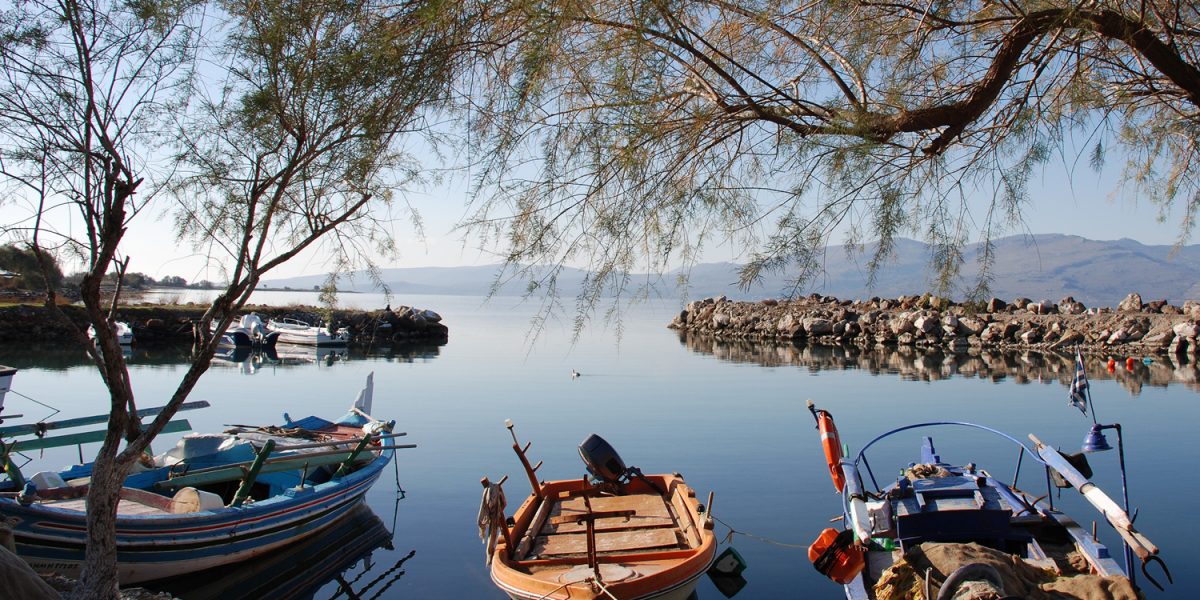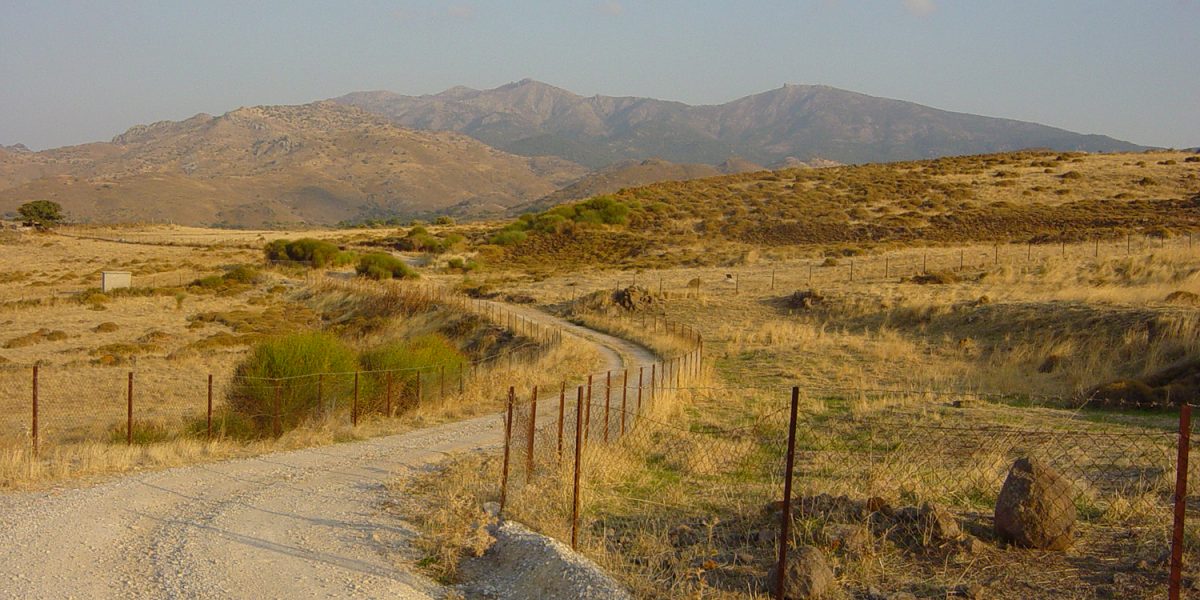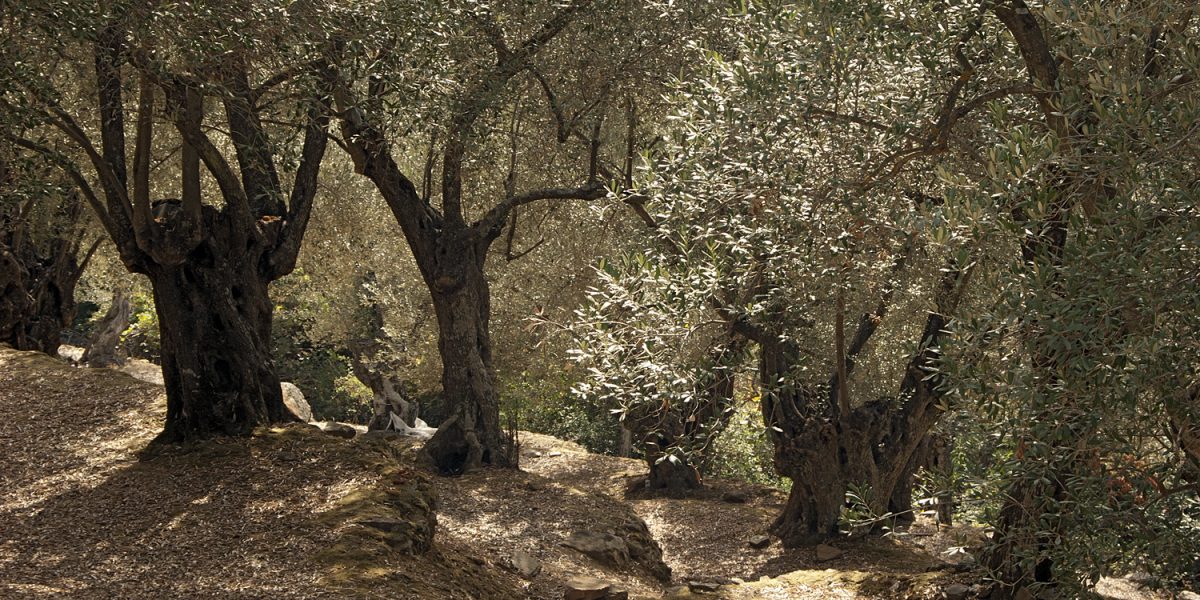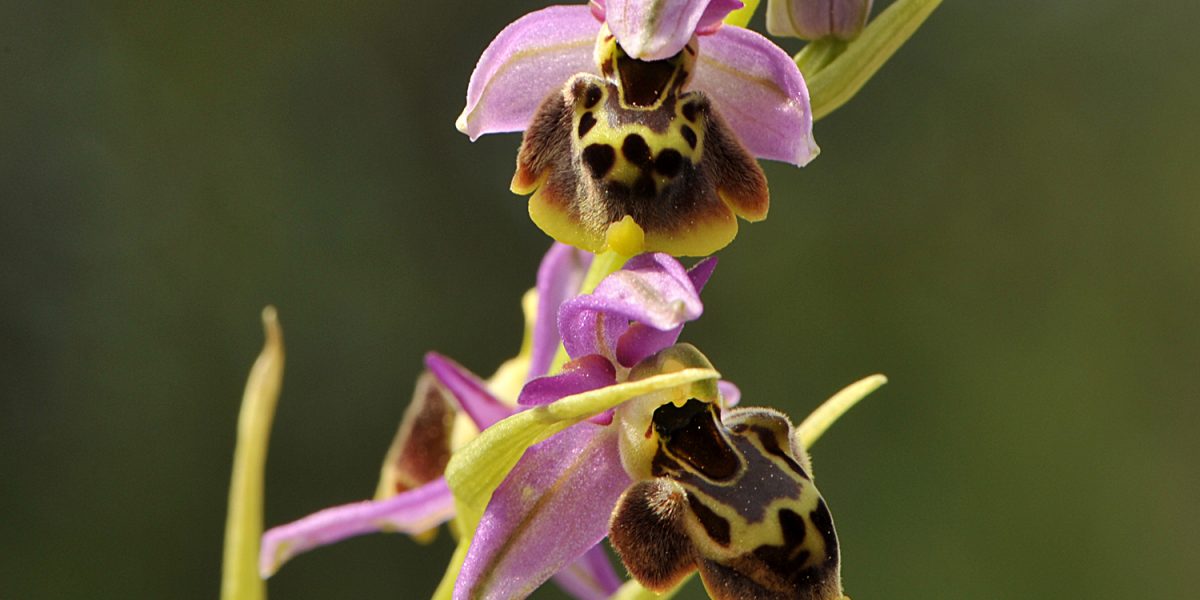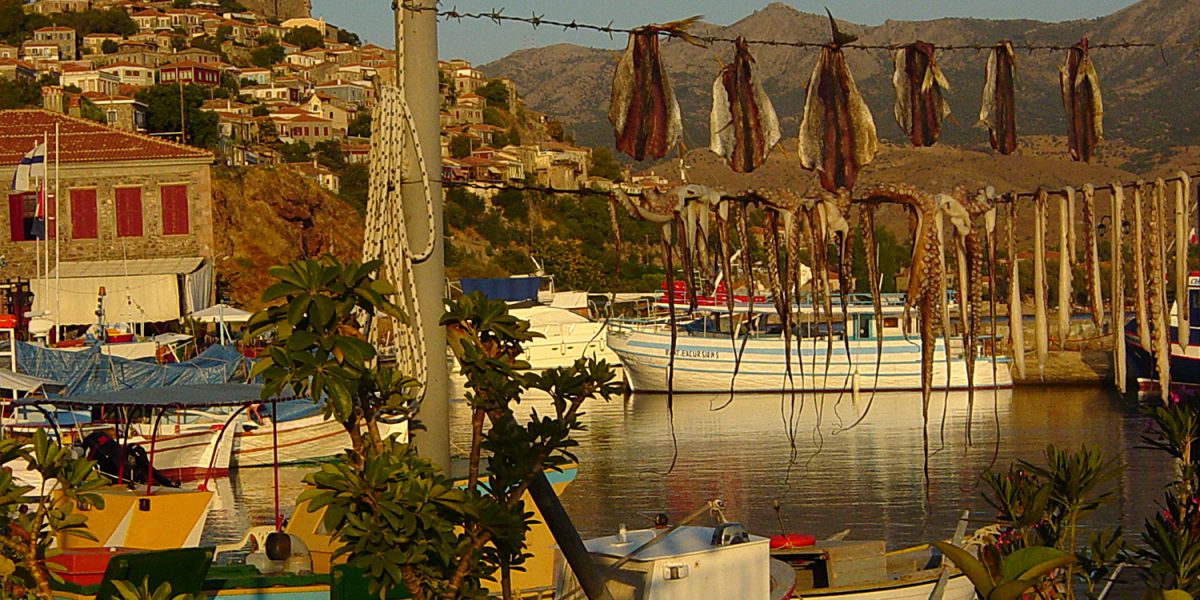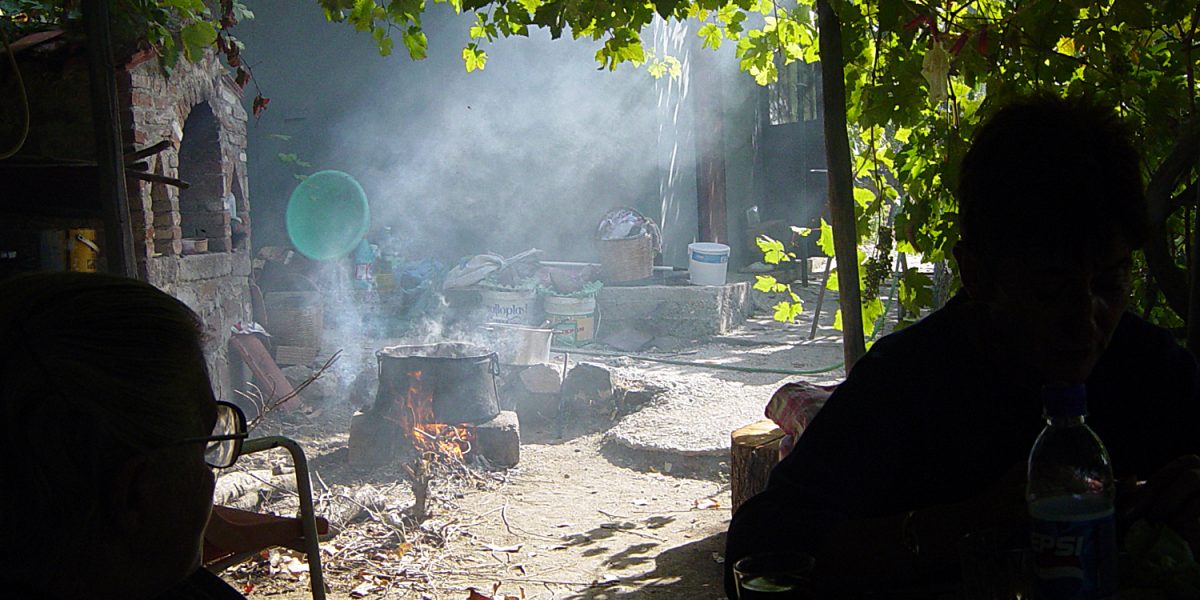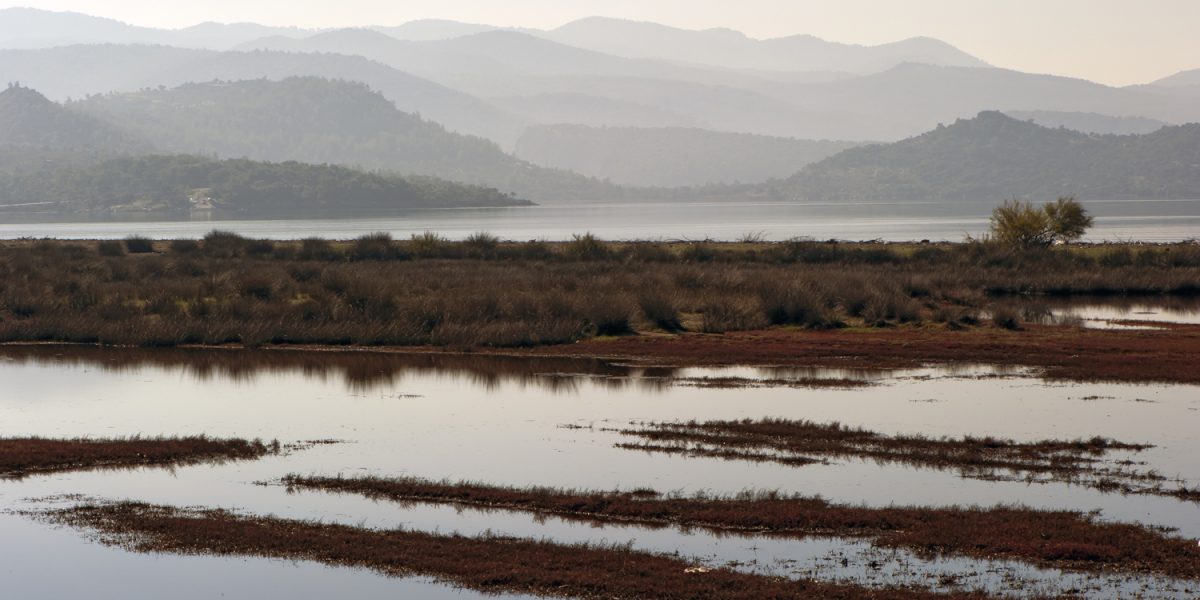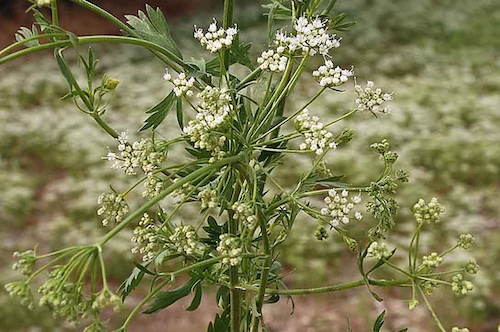(Anise flowers)
In the past, when winters still brought snow and ice, during the Christmas holidays there would always be ice skating fun for children and mothers loved to serve whole cups of warm anise milk to their offspring. Ice skating for me was synonymous with that drink; I loved wandering over frozen ponds, but I hated the aniseed milk that we were given to warm us up. Maybe it was just the warm milk itself, which I also detest. How funny it is that I am now almost addicted to another anise flavoured drink: ouzo, that looks milky, but is made from plant-based ingredients.
Ouzo is made from alcohol and distilled with herbs, such as star anise, fennel, cumin, and coriander. Each ouzo brewer adds different herbs and guards his recipes as if they were rare diamonds. But they all use the main ingredient anise (Pimpinella anisum), and certainly that is the primary taste. The fresh flavoured anise is a herb that grows mainly in Mediterranean countries, as it does in Lesvos, particularly in the region around Lisvori.
Aniseed was here long before there was ouzo. In 1873, the German Egyptologist Georg Ebers stumbled upon an ancient papyrus roll in Luxor (it dated back to 1550 BC). When the hieroglyphs were translated, it turned out that the Ebers-papyrus contained around 700 medicinal recipes, treatments for a wide variety of ailments. In one of the recipes, there was anise, and this mixture (theriak) was good for stomach complaints and toothaches. Later, Pliny the Elder claimed that the Egyptians used anise to cure many more health conditions, such as snake bites. Even the great physician Hippocrates as well as Pythagoras had anise on their medicinal herb lists.
However, whilst the Ancient Egyptians, Greeks, and Romans had been chewing on anise seeds for centuries, ouzo was only invented in the nineteenth century, when distillation became popular. Originally there was the drink tsipouro, that was made from grape skins left over from wine pressing. In those times, it was mainly monks in monasteries who were engaged in making alcoholic brews; they claimed it was for medicinal purposes, but brewing beer was just as easy for them. The birth of ouzo appears to have been when a monk added anise seeds to the tsipouro: and the clear drink turned cloudy white when water was poured in. That is caused by anethole, the essential oil of anise, and it is also known as the ouzo-effect.
The first ouzo distillery was established in Tyrnavos (near Larissa) in 1856. The ouzo production on Lesvos started four years later, when Mr. Efstathios Varvayannis brought his family recipes from Odessa and settled in Plomari. There, his family still runs one of the largest ouzo companies in Greece. Every self-respecting village on the island brews its own ouzo, but Mytilini especially began to compete with Plomari with new brands, such as Mini. Now Lesvos has become the ouzo island of Greece.
Whether the anise fields of Lisvori existed before ouzo was invented, I do not know; but it is whispered that the best anise grows there. This is thanks to the special climate created by the Gulf of Kalloni, that kisses the fields with its briny and mineral-rich waters. This region is the main supplier of the Plomari ouzo, and these ‘ouzo fields’ provide not only anise but also other ouzo herbs, such as dill and cumin.
You could convince yourself that drinking ouzo is healthy due to the medicinal properties of anise and other herbs, although most people have no idea what goes into ouzo or what wonders the herbs provide. Over the centuries, anise has been attributed with a lot of medicinal properties, if we are to believe all the ancient healers, and it can be used against many ailments. However, anise is most praised as a breath freshener and for stimulating digestion and appetite. It’s no coincidence that Pastis or Ricard is a popular aperitif in France. Similarly ouzo, Turkish raki and tsikoudia (the Cretan variant of raki) have not remained just aperitifs, but have all been promoted as accompaniments to small bites (mezèdès) and you can even sit out entire meals with them.
Sipping a glass of ouzo, while looking out over a sun drenched Greek landscape, this anise drink no longer brings me any memories of the loosening and tightening of frozen skate laces that numbed your fingers. Nor has drinking anise milk left any indelible traces, even though I would drink it again when it permits me to skate like a carefree child over the snow and ice of flooded fields

